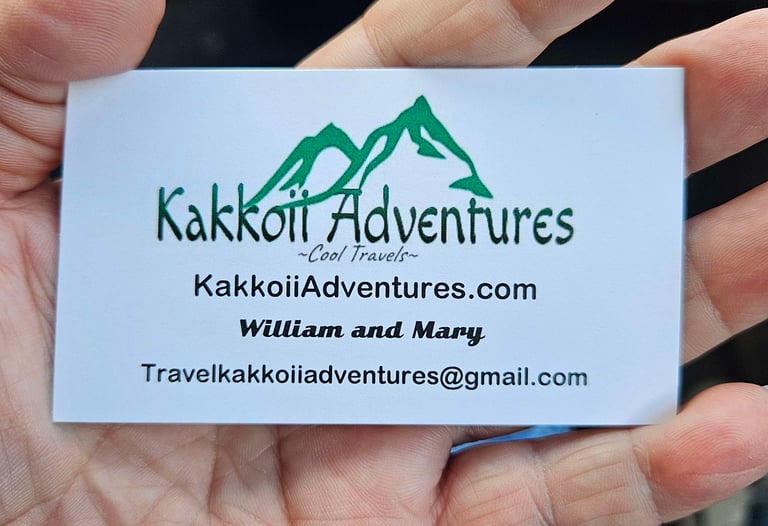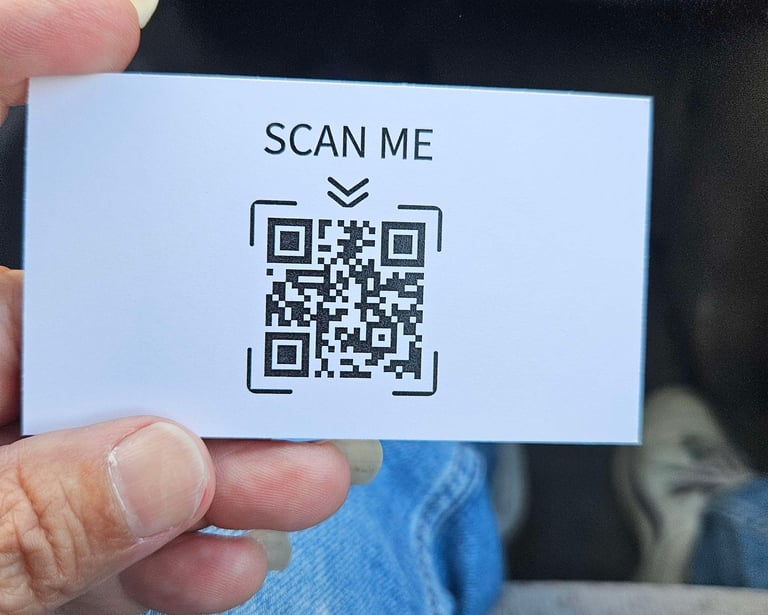What's Stopping You? Change Your Life!
The Paper Bridge
Meeting Japan the Japanese Way
WILLIAM AND MARY
11/15/20254 min read


We got our first meishi today. It’s a simple one — buff background, or names a green logo, and a QR code on the back. We’re excited to finally have something to share, and we’ve already handed a few out. But honestly, the real thrill is bringing it to Japan. We’ve been asked before if we had a meishi, and every time we came up empty-handed. Now we feel ready.
In America, a meishi is basically the same as a name card, calling card, courtesy card, or business card — a small note you leave as a professional introduction. It lists your name, phone number, and whatever company or project you represent. I’ve carried them before, and I’ve worked for places where having one was mandatory — part of announcing yourself and the firm behind you.
When we travel, we always try to immerse ourselves in a culture to better understand it. We pay attention to even the smallest rituals, because those rituals often tell you the most about a place. Before our first trip to Japan, someone told us to bring business cards. We didn’t, because we weren’t representing any company. Later, it was explained that in Japan these cards aren’t just a business gesture — they’re a way to form a small bond with the people you meet. Still, we didn’t bring any, and we’ve regretted it ever since.
I’ll never forget the docent at the Yamato Museum in Kure who offered us his card. After we thanked him, he politely asked for ours — and we had nothing. We promised ourselves we’d get some made. We didn’t. Two years passed before we finally kept that promise. Now here we are, holding them in our hands. Part of me wishes I could find that man and make good on that moment.
This time, as Mary and I prepare for our trip, we’ve decided to step a little deeper into the culture. She ordered a stack of meishi for both of us: simple, clean, nothing flashy. Our names printed in crisp lettering, our travel blog name and logo beside them, and on the back — because we’ve been quietly nurturing that little blog — a small QR code that leads to our stories.
For a moment I worried: Is that inappropriate? Japan has rules for things that other countries don’t even think about. There are ways to pour tea, ways to enter a home, ways to bow, ways to simply exist in a room without causing ripples.
The Greeting Before Words
Japan is a culture of rituals — and they work. A meishi isn’t casually handed over; there’s etiquette involved. Travel has taught me that a wanderer needs to be observant. So we watched, learned, and practiced the proper way to offer one.
Receiving a card feels like an unspoken welcome: You’re in my country. Let’s begin properly. It’s a formal recognition that two people are meeting, even if just for a moment.
Japan is full of these little “before” moments — the rinsing of hands before entering a shrine, the doorway bow before slipping into a restaurant, the silent pause before a train arrives. The meishi fits right in, a quiet dance performed millions of times a day.
One of my favorite parts of the tradition is how widely it’s used. There’s something quietly endearing about that. A meishi isn’t about status — it’s about connection. It tells someone, “I see you, and here is who I am.”
The QR Question
That tiny QR code on the back of our card worried me for about five minutes. Was it too bold? Too modern? Too much like handing someone a flyer?
But the more I thought about it, the more I realized that Japan is incredibly comfortable with QR codes. Half the temples I’ve visited had QR codes for history notes or donation links. Museums use them. Cafés use them. Even vending machines use them.
The key, I realized, is intention and placement.
The front shows who we are; the back shows where we wander.
If someone turns the card over and scans it, that’s their choice. We’re not promoting anything — we’re just sharing a piece of ourselves in a respectful, quiet way.
Just like the meishi itself — it isn’t marketing or networking.
It’s a gesture, one that says, thank you for this moment; here’s who we are.
And that feels right for Japan. In a country where whole philosophies hide in the way someone bows or hands you a cup of tea, the meishi is another soft thread in the fabric — a tiny bridge made of paper, spanning the space between strangers.
And I’m looking forward to offering that bridge, gently, with both hands.




